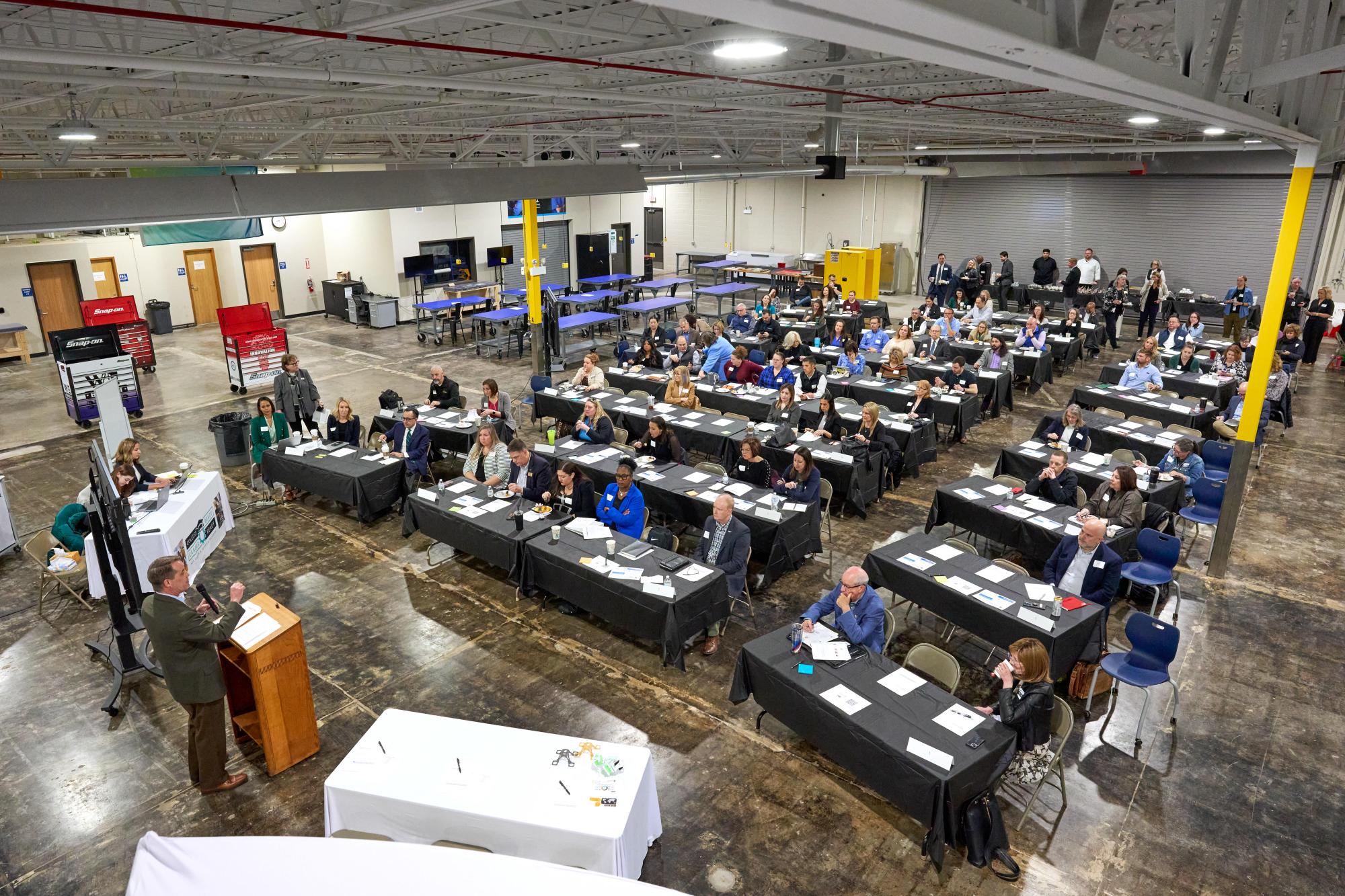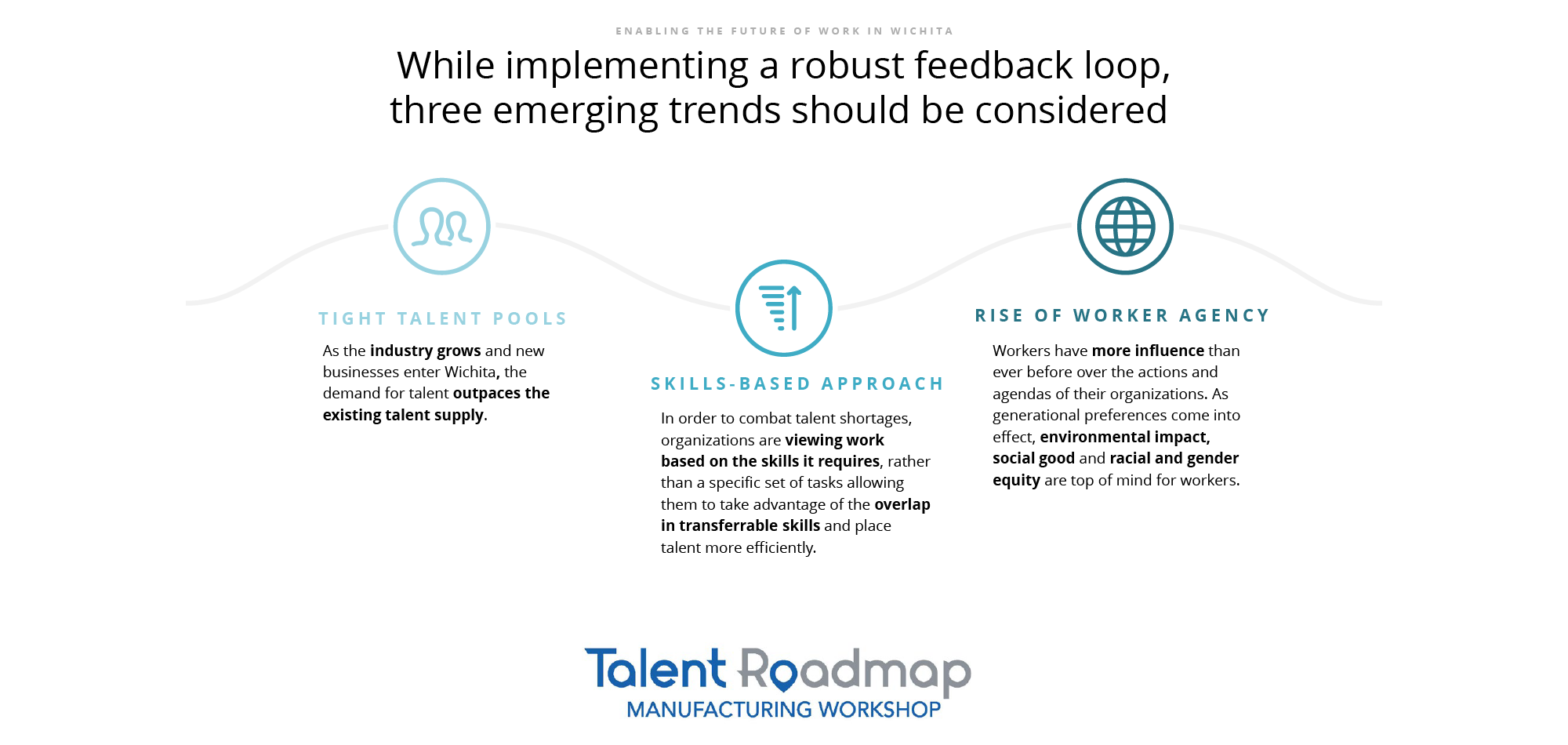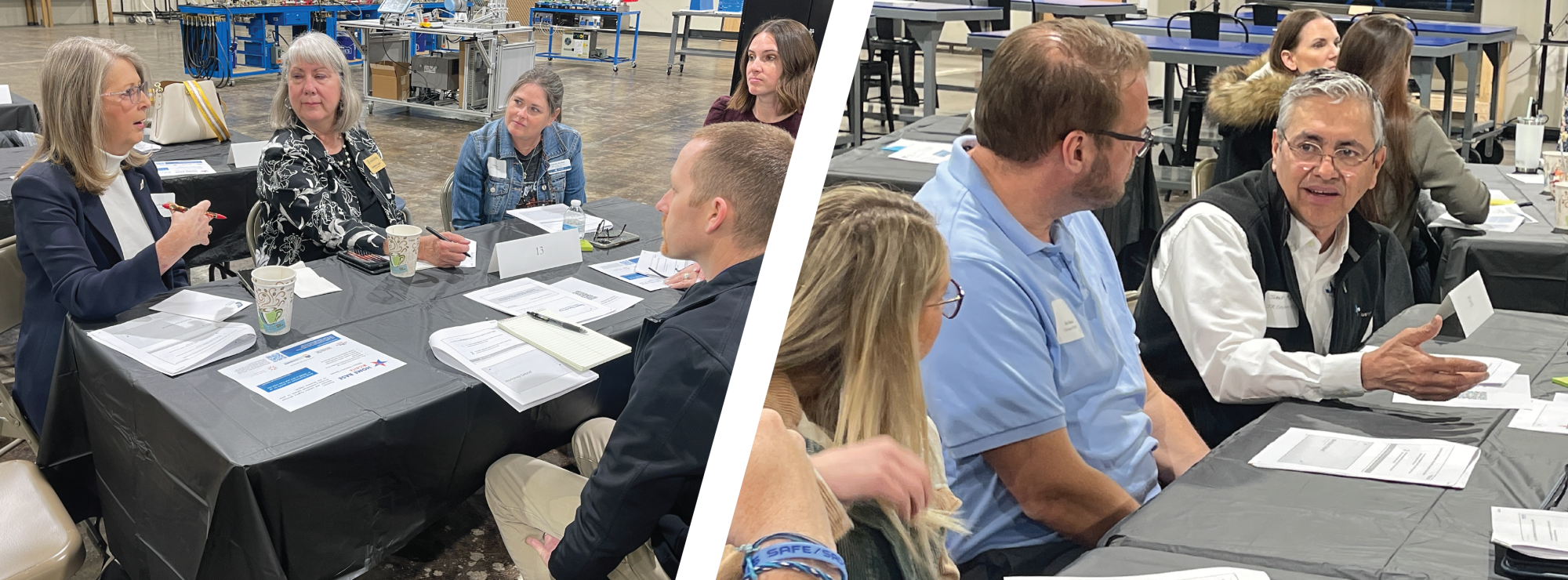In one round table, representatives from Textron Aviation, Spirit AeroSystems, Integra Technologies, Inc., and WSU Tech discussed the need to create a common language in job postings and job descriptions. The participants learned talent may respond better to consistent job titles and descriptions that are more skills-based rather than task-based.
“We are small right now, but we are expanding so it was great to absorb what these larger companies such as Textron and Spirit are able to accomplish and hear their experiences,” said Chelsie Ness, vice president of human resources of Integra Technologies Inc.
Another discussion revolved around the opportunity to create a more cohesive way for industry and education to communicate, whether that be advisory committees, internship programs or other training offshoots.
“It’s an ecosystem. We have a lot of great conversations, but it feels a bit fragmented right now,” said Scott Lucas, vice president of aviation, manufacturing, and institutional effectiveness at WSU Tech.
Another group, which included representatives from Textron Aviation, Spirit AeroSystems, USD 259, and the Workforce Alliance of South-Central Kanas, Inc., touched on the need to interact with talent in all stages of life.
“When I was young, I was told to go to college, go to the business world. No one talked about nonprofit, manufacturing, and all the different career opportunities,” said one attendee. “We need to make sure the manufacturing industry is in front of students. We have to be on the front of change.”
What does that change look like? Participants agreed it starts with workshops such as this where industry and education can bridge the communication gap, but ultimately it takes strategic action by all parties involved to prepare and train the future workforce and seek out new talent pool opportunities.
“Feedback is an important first step, but we all need to act on the feedback coming out of today's workshop. Simply by learning about opportunities at our schools, such as the Future Ready Center or CTE Pathways, business leaders can share and promote these to the people around them. Encouraging students to get the training they need to become future-ready, this can really impact both our talent pipeline and our community as a whole,” Bielefeld said.







